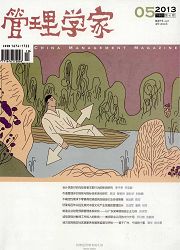

 中文摘要:
中文摘要:
以民营企业领导者为研究对象,采用建构主义扎根理论方法,通过对Y领导活动质性数据的广泛收集和整理,从应对不确定性视角对本土民营企业领导者成长过程进行了诠释性分析。研究构建了包含“涌现型不确定性挑战”、“趋势型不确定性挑战”、“能动致变”、“推动学习”等9个核心类属的本土民营企业领导者成长过程模式,并分析了领导者成长过程的被动“适应”、主动“设计”以及二者间相互转化的复合路径,具体说来:1领导者通过积极的问题响应和能动致变活动,不断地完成对涌现型不确定性挑战的应对,获得实践经验积累,构成了领导者成长过程的被动“适应”路径;2领导者在企业发展各个阶段,预先识别“趋势型”不确定性挑战并通过推动学习适应未来竞争,构成了领导者成长过程的主动“设计”路径;3领导者成长的主动“设计”与被动“适应”路径并非完全独立,二者存在相互转化的诱发机制。
 英文摘要:
英文摘要:
This paper draws on a longitudinal case study to investigate the evolutionary process of native leader in private enterprise. Through extensive collection and cooperation of qualitative data concerning Y's leader activities, interpretative analysis of local private entrepreneurs growth process is investigated using constructivism grounded theory in view of responding to uncertainty. Nine core categories of native leader's evolutionary process model are constructed, which are "emerging uncertainty challenge"," tendency uncertainty challenge" ,"initiative treatment" , "promote learning" and so on. Moreover,the "passive adaptation" ,"active design" and complex transformation between the two paths during leader's evolutionary process are analyzed in this research : Leaders respond to emerging uncertainty challenge through positively responding and accumulate practical exercise which constitutes passive adaptation in leaders' evolutionary process. In every stage of corporation development, Leaders identify tendency uncertainty challenge in advance and adapted this challenge through promoting learning which constitutes active design in leaders" evolutionary process. The paths of active design and passive adaptation in leader's evolutionary process are not completely independent and there are transformation inducement mechanism between them.
 同期刊论文项目
同期刊论文项目
 同项目期刊论文
同项目期刊论文
 Replying to management challenges Integrating oriental and occidental wisdom by HeXie Management The
Replying to management challenges Integrating oriental and occidental wisdom by HeXie Management The When does perceived leader regulatory-focused modeling lead to subordinate creativity? The moderatin
When does perceived leader regulatory-focused modeling lead to subordinate creativity? The moderatin The distinctive effects of dual-level leadership behaviors on employees’ trust in leadership: An emp
The distinctive effects of dual-level leadership behaviors on employees’ trust in leadership: An emp GUEST EDITORS’ INTRODUCTION, Mastering Chinese business model by conducting indigenous management re
GUEST EDITORS’ INTRODUCTION, Mastering Chinese business model by conducting indigenous management re Contorted Leadership in Chinese Hierarchically Oriented Context: How Social Governance Influences Or
Contorted Leadership in Chinese Hierarchically Oriented Context: How Social Governance Influences Or 期刊信息
期刊信息
